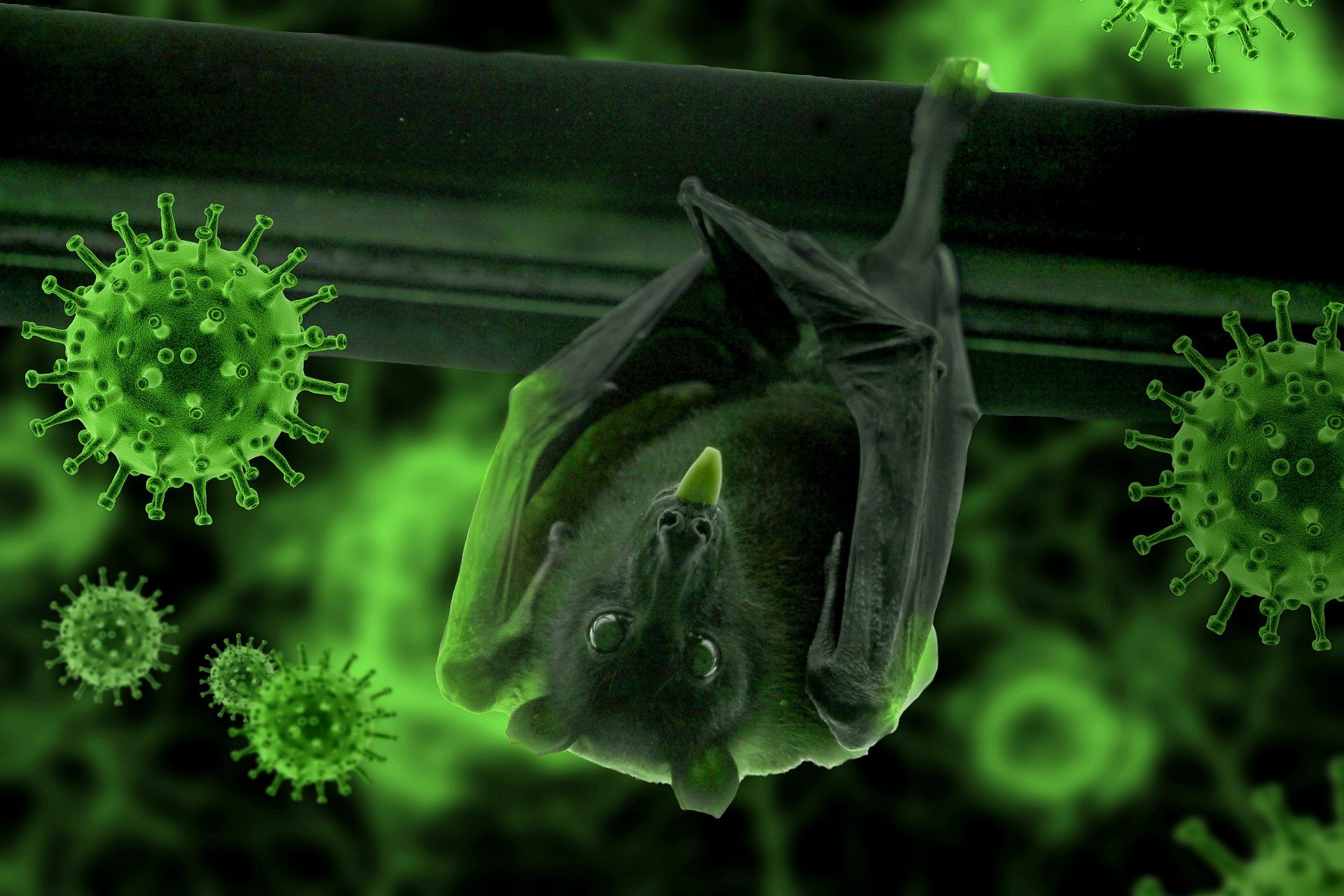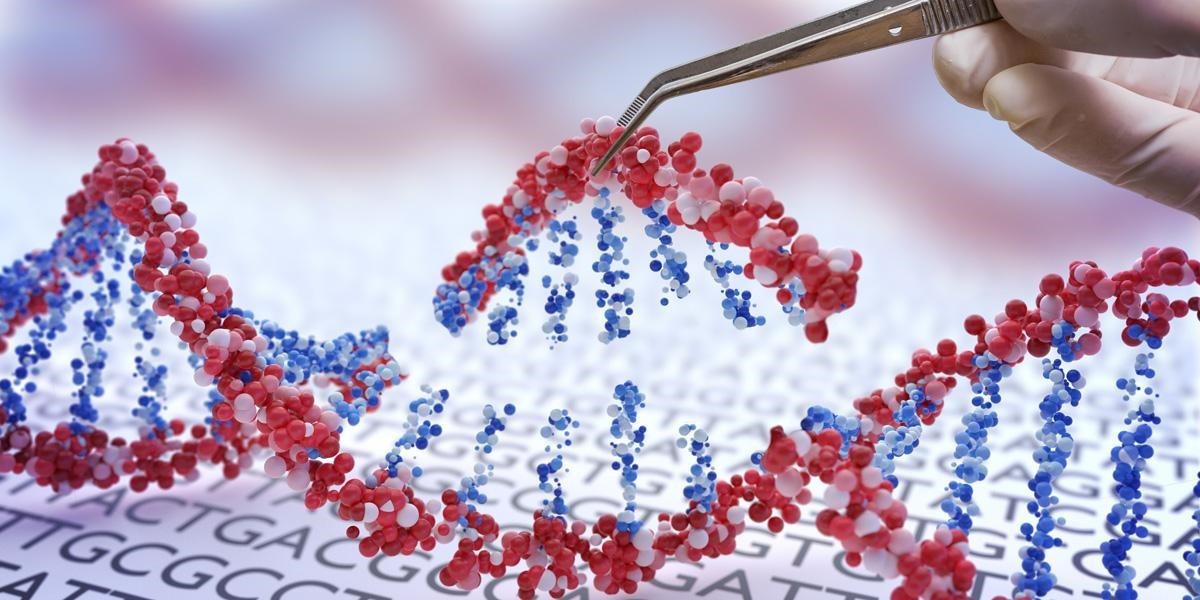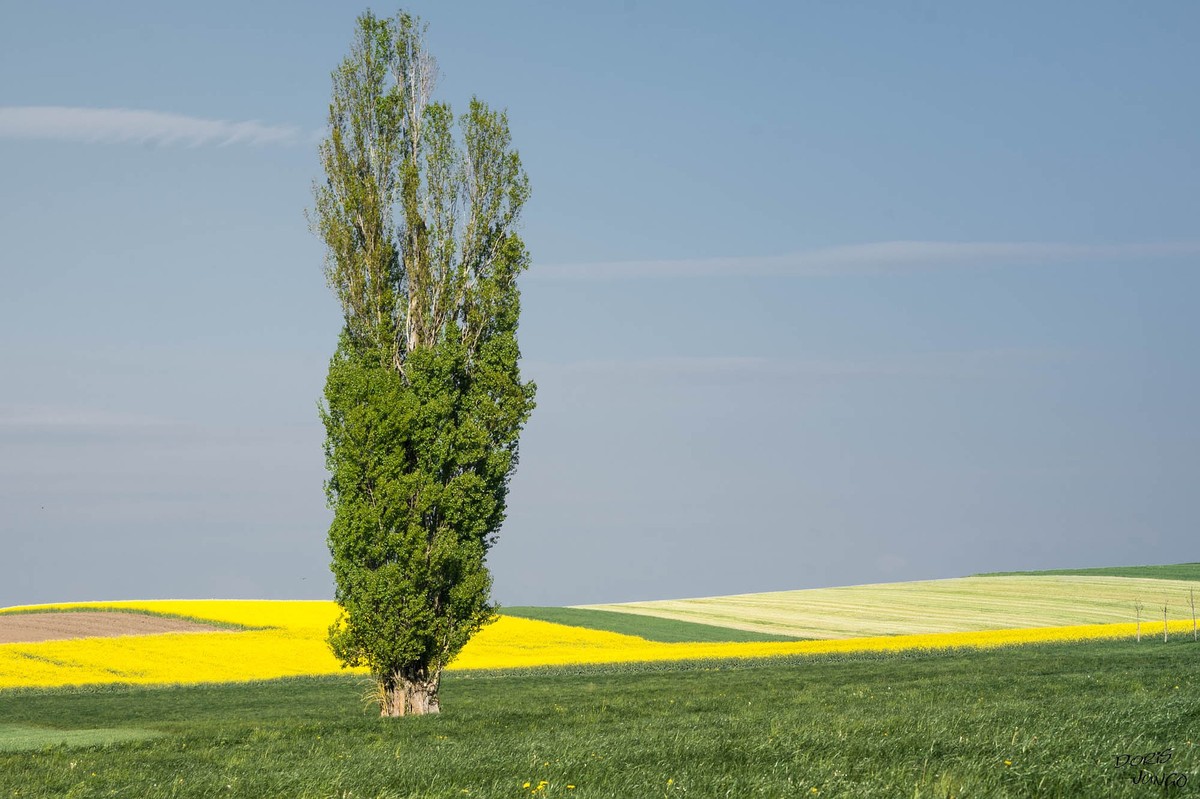CRISPR-Cas9 to help combat the ecological crisis
2021/07/19 Ekain Payán Ellacuria - Zuzenbide eta Giza Genomako Katedrako ikertzailea (EHU) Iturria: Elhuyar aldizkaria
The SARS-CoV-2 coronavirus has harshly shaken the foundations of society. However, in the short term, it appears that the current pandemic will not be the last pandemic, as confirmed by the World Health Organization, WHO, and its possible consequences can destroy the natural habitat of humans. Science can also be useful for this.

The medium and man: victim or responsible person?
To avoid future health crises [1] it is necessary to deepen the origin of covid-19mal. The WHO has found that it is a zoonotic disease [2], i.e. that it is derived from animals to people – see image.
In this respect, the European Environment Agency has warned that loss of biodiversity and eating habits increase the likelihood that such infections are transmitted to humans [3]. Also, as animal and plant species are reduced [4], experts expect that the population will continue to grow between the years 2050 and 2100 [5], so that humans become an ideal destination for the spread of new pathogens.
Meanwhile, the overall closure of 2020 only temporarily mitigated the climate emergency. In fact, the last five-year period has been the hottest of all time since records are available [6], which means an increase in extreme weather events such as pests or droughts. In parallel, global warming strongly accelerates thermal expansion and melting of ice masses, which are the main causes of sea level rise [7].
Behind this is the footprint of people: one cannot forget that human activity has a direct influence on nature, nor that the conservation of the Earth requires a sustainable lifestyle. Aware of this, several states signed the Paris agreement in 2016 to reduce greenhouse gas emissions of carbon dioxide. However, the United States, the second largest pollutant in the world, came out of the agreement and has just been returned and the agreed commitments may be limited, in whole or in part [8]. As if it were too little, some countries consider promoting the production of fossil fuels rather than reducing them [9]. Therefore, the need for a change of direction [10] and the existence of initiatives worthy of channelling diversification have already been demonstrated.
CRISPR-Cas9, beyond the transformation of the human genome
The emergence of biotechnology for the editing of the human genome has revolutionized science, namely the Combined and Regularly Intercalated Repetitive Palindrome Shorts – CRISPR-Cas9 techniques. In particular, the so-called CRISPR was discovered in the 1990s by Mojica when it announced that the bacteria had their own antivirus defense system [11]. However, in living beings it was not applied until 2013, when Doudna and Charpentier added Cas9 [12]. This discovery is so disruptive that they've been given the 2020 Nobel Prize for Chemistry.
Thus, the CRISPR technology identifies where the body wants to act and conducts the Cas9 protein towards cutting affected genes, so it is also known as molecular scissors or scissors. Then the cells themselves form the section even if it is random. This mechanism is simpler, cheaper and more precise compared to previous editing tools (TALAS and DFN) [13]. Although it has attracted all attention to curing serious diseases of human embryos, according to inventor Doudna, it will be used mainly in the primary sector [14].

The challenge of sustainable development
The fact that overpopulation requires more food production in the next 50 years than in the previous 10 thousand years [15] and the local climate variable will jeopardize the supply of a large number of villages and, consequently, their food property in danger of extinction. Proof of this is that we often turn to imports and make the price of a product more expensive. And what do you do when it affects all territories? This can occur to a greater or lesser extent in an interconnected world.
Selective selection means that in order to obtain quality products it is not strange to cross or hybridize between species, such as a great variety of fruits and vegetables found in the markets. For example, the Basque Institute for Research and Technological Development, Neiker-Tecnalia, has developed clones of purple and red potatoes, resulting in the commercialization of the potato “Beltza”. According to the researchers, on the one hand it can promote the health of consumers by its antioxidant properties, and on the other it can adapt to broad climatic situations and show greater resistance to disease [16]. Through science, progress can be made in agriculture, livestock and forestry, respectively, where CRISPR-Cas9 appears.
The first has produced gluten-free wheat [17], for which the vast majority of the proteins responsible for celiac disease, called gliadin, have been genetically manipulated and the rest have remained intact. The immune response allows both the diet of people with gluten intolerance and that of sensitive people to improve markedly, since the gluten-free diet is the only way to not damage the small intestine.
In the second, cows resistant to climate factors are growing [18]. It seems that when it's too hot, cows, who are also responsible for greenhouse gases, suffer from stress and eat very little, so they get less milk. They also have reproductive difficulties and, in exceptional cases, risk of reaching death. To avoid this, the pigmentation genes have been transformed in order to soften the dark colors of the fur, which in other words become black and/or brown in silver grey, thus reducing the absorption of heat. The same is expected with a genetic mutation to cut hair. Despite the collateral effects of cloning, the effort was bankrupt, in two calves born no side effects were detected outside the congestion.
In the third, the ecological footprint of the chopper tree has been reduced [19]. In passing, you can increase your resilience to climate and stress. We must not forget that trees and plants are the main producers of oxygen, while catching CO2 from the atmosphere and cleaning up the air. In this sense, there are also editing attempts to absorb more carbon dioxide. In addition, the wood and bioenergy industry can also be an influential agent, both to get more copious pulps and to reduce waste.

European judgment: CRISPR-Cas9, impossible
According to scientists, such research may be a bet on sustainable consumption [20], but it will not apply to the European Union. This was agreed by the Court of Justice of the European Union on 25 July 2018, when, in Case C-528/16, it considered as genetically modified organisms those acquired by the new mutagenic techniques, the so-called CRISPR-Cas9, interpreting Directive 2001/18 under the principle of responsibility [21].
Since then, many have called for their resolution and reform [22]. In fact, unlike GMOs, what is being done is to specifically accelerate the natural processes of the product concerned, without introducing the DNA of the outer species. Therefore, it is not possible to clearly differentiate which of them is obtained with chemical agents, both X-rays and mutations. On the other hand, so far there has been no lack of safety, but random events can occur every time the cells divide, ignoring whether they are beneficial or harmful. In any case, it is undeniable that technology is not enough to solve climate change: efforts must be combined to promote clean energy, recycling and management of plastic waste or the consumption of proximity products, among others.
In short, the integration of agroecology and genetics can contribute to the survival of biodiversity, future generations and the planet in general. In fact, the vaccine against covid-19 [23] is transgenic and consists of such an important RNA molecule to understand the CRISPR-Cas9 technique [24]. Why not trust science again?
References
1 World Health Organization WHO (01-10-2020). “The best time to preventthe next pandemic is now: join countries voices for better emergency preparedness.” [Press release of the World Health Organization]. Available: https://www.who.int/news/item/01-10-2020-best-the-time-to-prevent-the-next-pandemic-is-now-countries-join-voices-for-better-emergency-preparedness [Consulted: 29-06-2021].
2 Pérez Iglesias J. I. (20-10-2020). “Zoonoses”. [Spanish language].
3 European Environment Agency (05-11-2020). “COVID-19 and Europe’s environment: impacts of a global pandemic”. Briefing No. 13/2020, 1-15. ISSN: Adjustment 2467-3196: 10.2800/626706
4 World Wildlife Fund WWF. 2020. “Living Planet Report 2020”. Available at https://livingplanet.panda.org/en-us/?utm_campaign=living-planet&utm_medium=media&utm_source=report [Accessed: 29-06-2021].
5 United Nations Organization UN (17-6-2019). “2019 Revision of World Population Prospects”. Available: https://population.un.org/wpp/ [When consulted: 29-06-2021].
6 World Meteorological Organization (19-12-2020).“Provisional Report on the State of the Global Climate 2020”, 1-38. Available: https://library.wmo.int/doc_num.php?explnum_id=10444 [Accessed: 29-06-2021].
7 T. Frederikse, F. Landerer, Aron L. Adhikari S. D. Parkes, Humphrey V. W. etc. 2020. The causes of sea-level rise since 1900. Nature, 584, 3393-397 doi: 10.1038/s41586-020-2591-3
8 Watson R., McCarthy J. J. P. Canziani, Nakicenovic N. e Hisas L. 2019. The Truth Behind the Climate Pledges. The Universal Ecological Fund FEU-US, Buenos Aires. ISBN: •
9 SIX, IISD, PIPES, E3G and UNEP. 2020. “The Production Gap Report: 2020 Special Report”, 1-76. Available at https://productiongap.org/wp-content/uploads/2020/12/PGR2020_FullRprt_web.pdf [Accessed: 29-06-2021].
10 Euskal Herria post-COVID19. 2020. “For the ecological economy of the Basque Country post-COVID19”. Available: https://euskalherriapostcovid19.eus/ [When consulted: 29-06-2021].
11 F. Mojica J. M. Judge G. and Rodríguez Valera F. 1993. “Transcription at different salinities of Haloferax mediterranei sequences adjacent to partially modified Pstl sites”. Molecular Microbiology, 9(3), 613-621 doi: 10.1111 – j.1365-2958.1993.tb01721.x
12 Jin M., C. Chylinski, Fonfara I, Hauer M., D. Doudna A. and Charpentier, E. 2012. “A Programmable Dual-RNA-Guided DNA Endonuclease in Adaptive Bacterial Immunity”. Science, 337(3096), adjustment 816-821: 10.1126/science.1225829
13 Etxebeste Aduriz, E. 2016 “CRISPR, genome editing technique: benefits and concerns”. Elhuyar Magazine: Science and technology, 321, 34-40. ISSN: 0213-3687.
14 Brodwin, E. (20.04.2019). “We’ll be eating the first Crispr´d food within 5 years, according to a geneticist who helped> the blockbuster gene-editing tool,” Business Insider. Available: https://www.business essinsider.com/first-crispr-food-5-years-? ey-scientist-inventor-2019-4 [Consulted: 29-06-2021].
15 Davies, K. 2020. [Editing Humanity]. The CRISPR Revolution and the New Era of Genome Editing. Pegasus Books, New York. ISBN: 01001-64313-308-9
16 Instituto Vasco de Investigación y Desarrollo Tecnológico Neiker-Tecnalia (17-6-2020). “Udapa will conduct an agroeconomic and commercial hosting study of the potato variety “Beltza” created by NEIKER”. Available at https://neiker.eus/es/news/negro-nombre-patata arrisi-da-commercial-pur-mamia-eta-antioxidants/ [When consulted: 29-06-2021].
17 J. Gil-Humanes, Piston F., Altamirano-Fortoul R. Real A., Comino I, Sousa C. etc. 2014 “Reduced-gliadin wheat bread: an alternative to the gluten-free diet for consumers suffering gluten-related pathologies”. PLOS ONE, 9(3), 1st - 9th adjustment: 10.1371/journal.pone.0090898
18 Mullin E. (10-11-2020). “Scientists Are Building Cows to 978-84-Climate Change”. Future Human. Available: https://futurehuman.medium.com/scientists-are-building-cows-to-resist-climate-change-37b877f27b2f [Accessed: 29-06-2021].
19 B. De Meester, Madariaga Calderón B, de Vries L. Pollier J., Goeminne G. Van Doorsselaere J. V. etc. 2020. “Tailoring poplar lignin without yield penalty by combining a null and haploinsufficient CINNAMOYL-CoA REDUCTASE2 allele”. Nature Communications, 11(5020), 1-13 doi: 10.1038/s41467-020-18822-w
20 Science Advice for Policy by European Academies (SAPEA). 2020. A sustainable food system for the European Union. SAPEA, Berlin. ISBN: 01003-9820301-7-3.
21 Romeo Casabona C. M. 2004 Precautionary Principle, Biotechnology and Law. Comares, Bilbao-Granada. ISBN: 84-8444-863-0
22 European Sustainable Agriculture Through Genome Editing (EUSAGE). (27-07-2020). “Open Statement of EUSAGE”. Available: https://www.eu-sage.eu/sites/default/files/2020-02/Open%20Statement.pdf [When consulted: 29-06-2021].
23 Agirre Ruiz de Arkaute A. (01-09-2020). “Covid-19 vaccine: Health sovereignty or social responsibility?” Elhuyar Magazine, 339.
24 Musunuru, K. 2019. The CRISPR Generation. The Story of the World's First Gene-Edited Babies. BookBaby, New Jersey. ISBN: 9781543986372.




